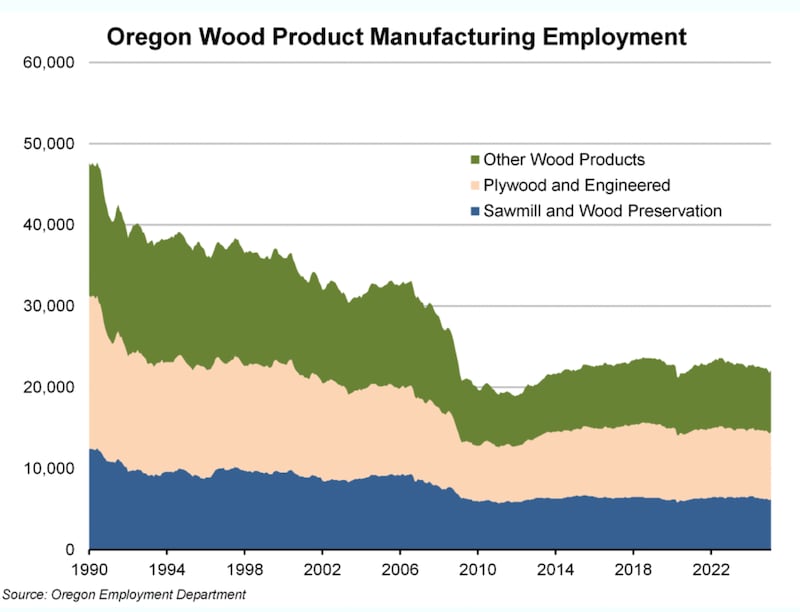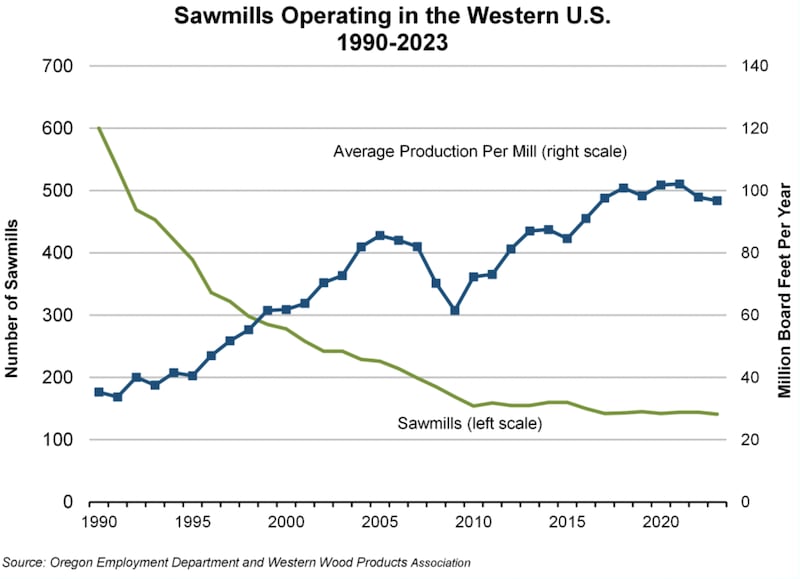New data from the Oregon Employment Department show that although wood product manufacturing jobs are far fewer than they were three decades ago, they remain an important part of the state’s economy.
“Even with the long-term decline, wood product manufacturing is still a large industry in Oregon,” wrote OED economist Brian Rooney in an April 18 report. “In 2024, there were 22,400 jobs and roughly $1.5 billion in total payroll in the industry.”

Wood products manufacturing, which includes sawmills, plywood and engineered wood products, millwork and prefab buildings, is particularly important in Oregon counties, such as Curry (11.7% of payroll) and Douglas (8.4%).
In his report, Rooney says technology has contributed to greater efficiency—and kept pressure on scarce manufacturing jobs.
“New technologies brought another structural change to the industry by making lumber mills less labor intensive,” Rooney writes. “Employment continued to drop even after harvest levels stabilized in the late 1990s, and employment did not increase much despite a housing construction boom in the mid-2000s.”

Meanwhile, the trend of mill closures continued.

Rooney does see a couple of bright spots. His agency expects employment for workers making plywood and mass timber—the engineered wood product the industry hopes can replace steel and concrete for some construction uses—to increase about 3% over the next decade. And many of the industry’s current workers will age out, creating additional demand.
“Aside from gaining 700 jobs between 2023 and 2033,” Rooney writes, “there are expected to be roughly 8,900 openings from people leaving the industry and the labor force, largely due to retirements.”
This story was produced by the Oregon Journalism Project, a nonprofit investigative newsroom for the state of Oregon.
